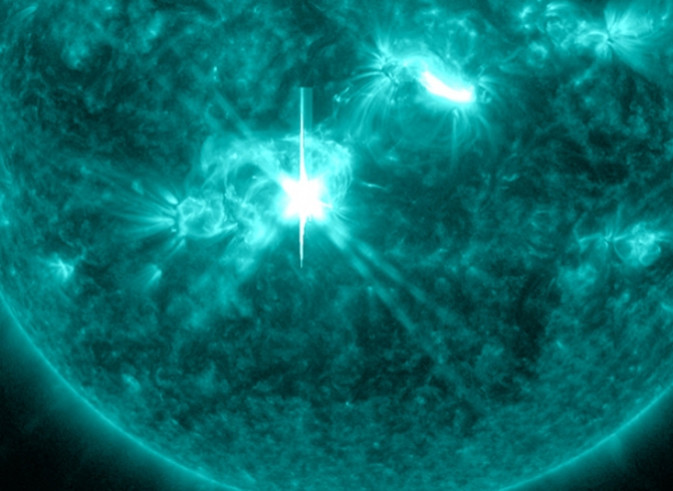Sun's Canyon Of Fire: New NASA Video Shows Spectacular Eruption

NASA released a video on Thursday, showing a mesmerizing eruption on the Sun in late September, which the space agency called a “canyon of fire” and described the celestial phenomenon as a magnetic filament of solar material that broke “the quiet conditions in a spectacular fashion.”
NASA said that the 200,000-mile-long filament ripped through the sun's atmosphere called the corona, leaving behind something like a fiery gorge. The video, which was created by combining two days of satellite data, shows a tongue of flame blasting away from the sun, firing superheated gas into space.
The images were captured on Sept. 29 and Sept. 30 by NASA's Solar Dynamics Observatory, or SDO, which constantly observes the sun at a variety of wavelengths. Different wavelengths help capture different aspect of events in the corona.
According to scientists, the sun is not made of fire, but of something called plasma, which are particles so hot that their electrons have boiled off and created a charged gas that is interwoven with magnetic fields.
“The red images shown in the movie help highlight plasma at temperatures of 90,000° F and are good for observing filaments as they form and erupt,” NASA said in a statement. “The yellow images, showing temperatures at 1,000,000° F, are useful for observing material coursing along the sun's magnetic field lines, seen in the movie as an arcade of loops across the area of the eruption.”
The video also contains brown images at the beginning, which highlight material at temperatures of 1,800,000° F.
“By comparing this with the other colors, one sees that the two swirling ribbons moving farther away from each other are, in fact, the footprints of the giant magnetic field loops, which are growing and expanding as the filament pulls them upward,” NASA said.
On Wednesday, the sun emitted another mid-level solar flare, which peaked at 8:30 p.m. EDT. According to scientists, the flare was among the weakest that could cause some space weather effects near Earth.
Harmful radiation from a solar flare cannot pass through the Earth's atmosphere to physically affect humans on the ground, but if they are intense enough, they can create disturbances in the atmospheric layer that is home to satellites hosting Global Positioning System, or GPS, and other communications systems.
© Copyright IBTimes 2024. All rights reserved.






















